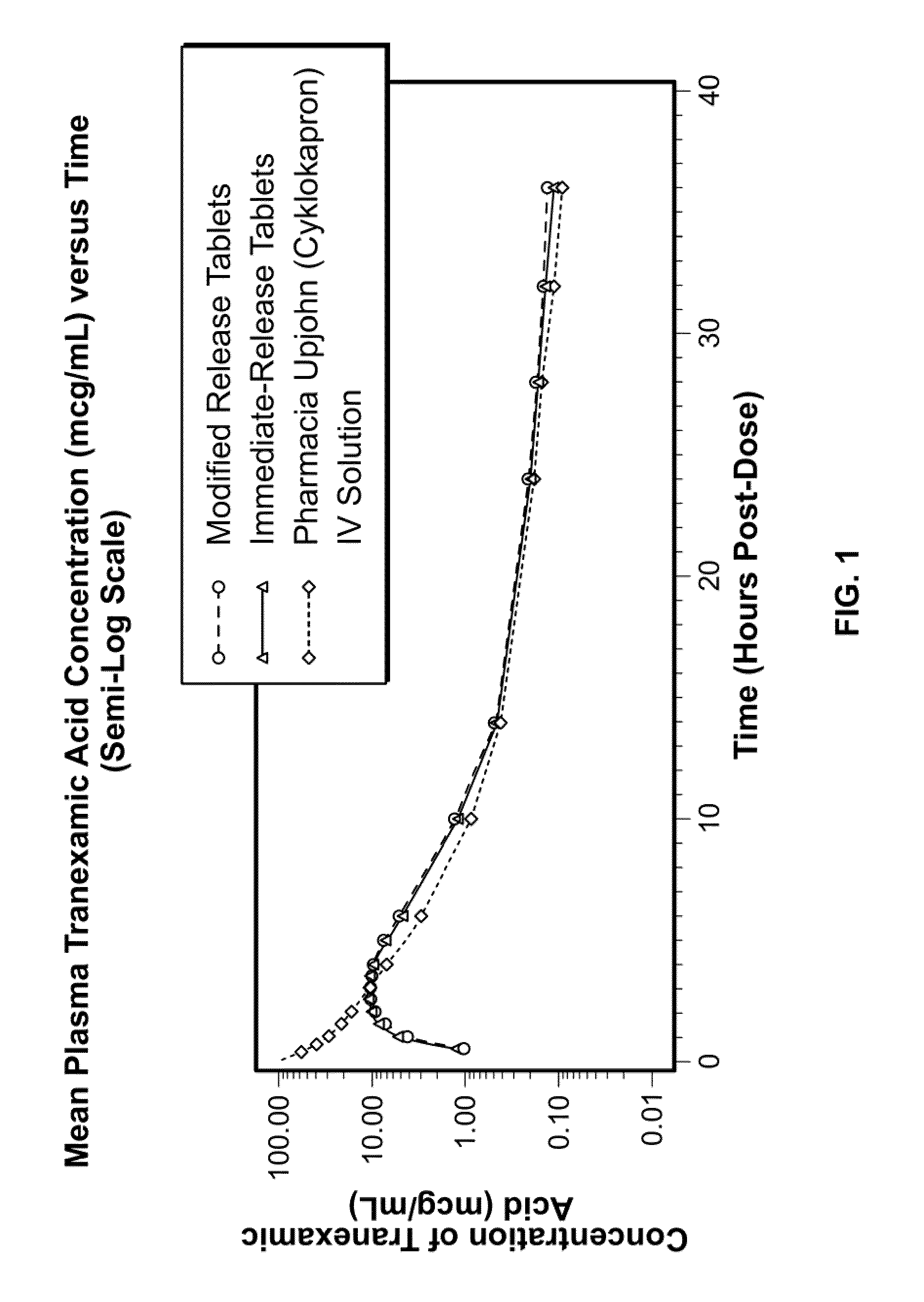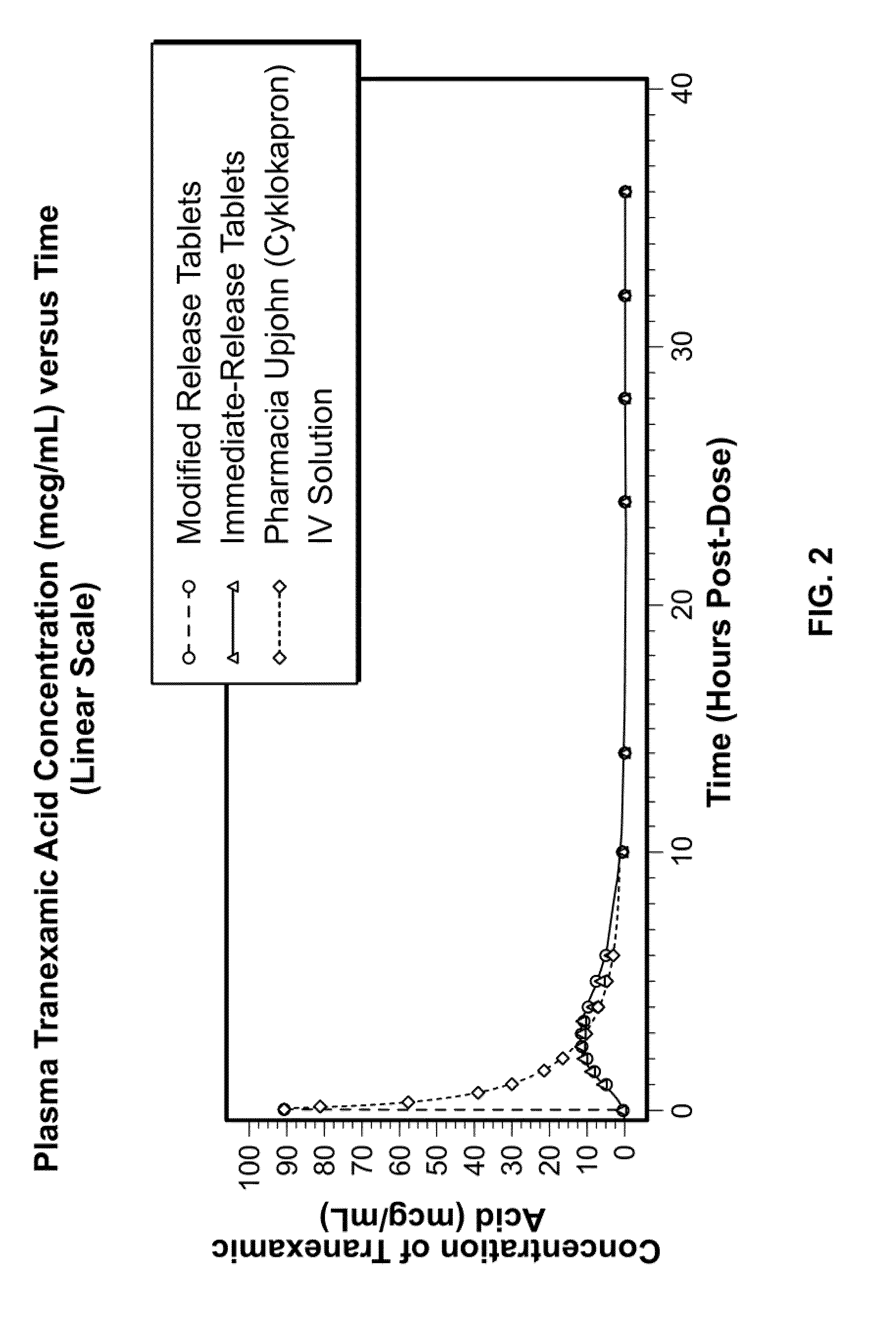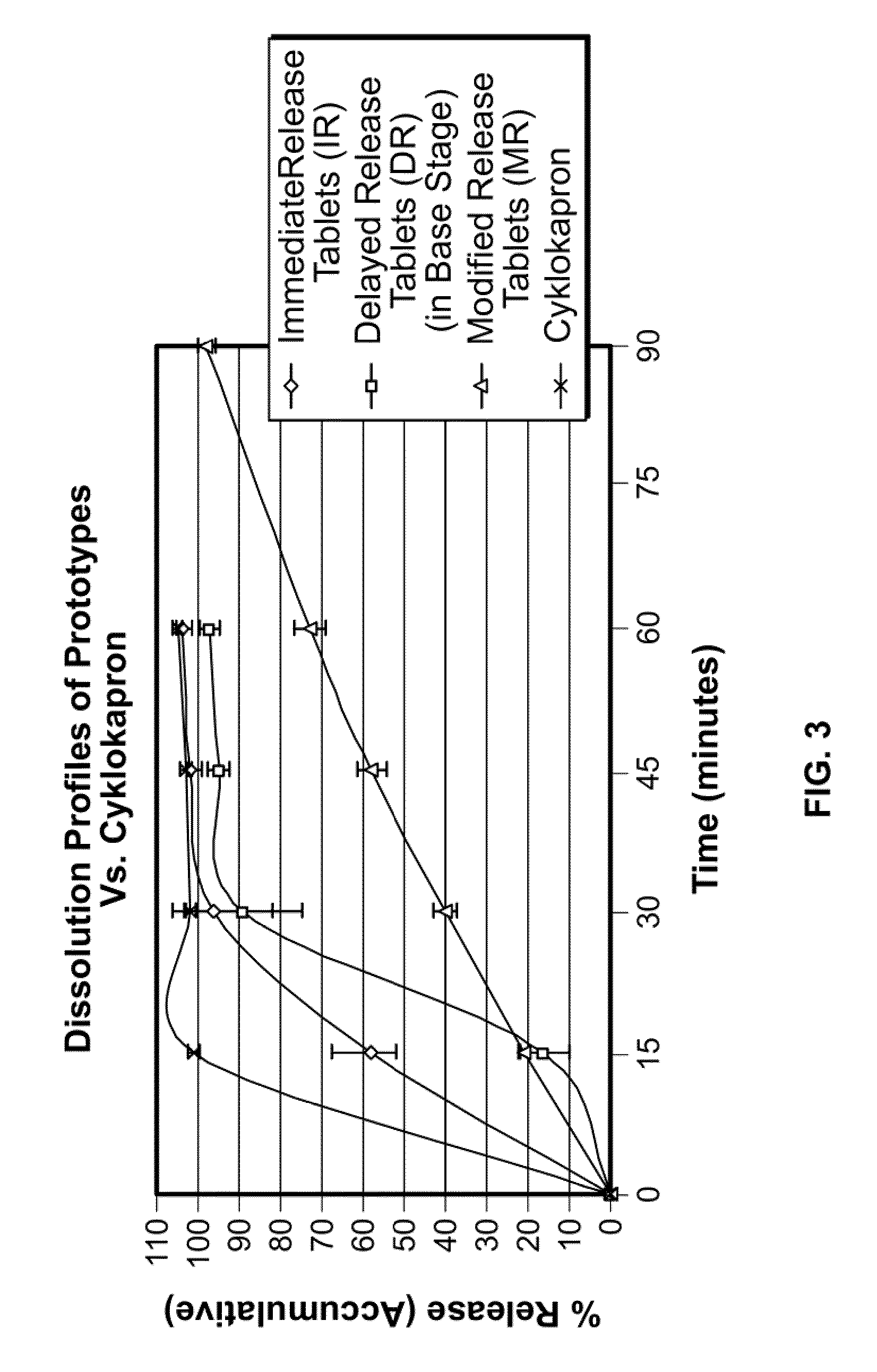Tranexamic acid formulations with reduced adverse effects
a technology of tranexamic acid and formulation, which is applied in the direction of biocide, drug composition, peptide/protein ingredients, etc., can solve the problems of significant decrease in health-related quality of life, significant decrease in work or school time, and adverse effects of gastrointestinal reactions, so as to reduce the concentration of tranexamic acid dissolved, minimize or eliminate undesirable gastrointestinal side effects, and prevent the dissolution of the drug in the stomach
- Summary
- Abstract
- Description
- Claims
- Application Information
AI Technical Summary
Benefits of technology
Problems solved by technology
Method used
Image
Examples
example 1
[0153]A sustained release formulation includes pH-dependent and -independent binders. Tranexamic acid (5333 g) is combined with methacrylic acid copolymer, Type C (Eudragit® L 100-55 (Rohm Pharma) (200 g), microcrystalline cellulose (Avicel® (142 g), and polyvinyl pyrrolidone powders (20 g) and intimately mixed in a Fielder PMA 65 mixer-granulator. The mixture is granulated with a solution of sodium hydroxide (8 g) in water, and a 30% aqueous dispersion of methyl methacrylate / ethyl acrylate copolymer (Eudragit® NE 30 D (Rohm Pharma) (300 g) is added to the wet mass. The resulting granulate is dried in an Aeromatic Strea-5 fluid bed drier, screened, and then mixed with croscarmellose sodium (10 g) and magnesium stearate (10 g). The mixture is compressed into tablets with a Manesty B tablet press to achieve a dose of 700 mg tranexamic acid per tablet.
example 2
[0154]A sustained release formulation is prepared according to Example 1 except that Eudragit® L 100-55 is reduced to 100 g, and Eudragit® NE 30 D is replaced by a 40% aqueous dispersion of a methyl methacrylate / ethyl acrylate copolymer (Eudragit® NE 40 D (Rohm Pharma) 200 g).
example 3
[0155]A sustained release formulation is prepared by blending tranexamic acid 700 mg / tablet with microcrystalline cellulose and polyvinylpyrrolidine K25, granulating with water, drying, and blending with croscarmellose sodium and magnesium stearate. The blend is compressed into tablets and coated with an enteric coating.
PUM
| Property | Measurement | Unit |
|---|---|---|
| pH | aaaaa | aaaaa |
| particle size | aaaaa | aaaaa |
| particle size distribution | aaaaa | aaaaa |
Abstract
Description
Claims
Application Information
 Login to View More
Login to View More - R&D
- Intellectual Property
- Life Sciences
- Materials
- Tech Scout
- Unparalleled Data Quality
- Higher Quality Content
- 60% Fewer Hallucinations
Browse by: Latest US Patents, China's latest patents, Technical Efficacy Thesaurus, Application Domain, Technology Topic, Popular Technical Reports.
© 2025 PatSnap. All rights reserved.Legal|Privacy policy|Modern Slavery Act Transparency Statement|Sitemap|About US| Contact US: help@patsnap.com



